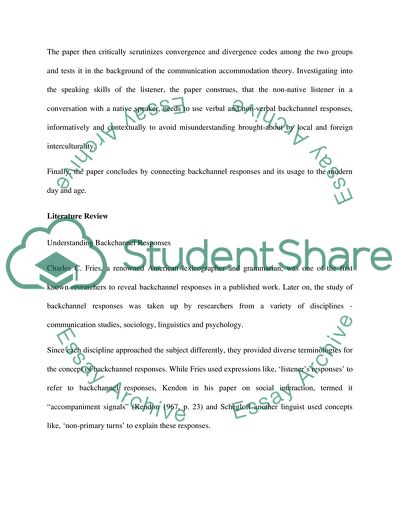Cite this document
(“Backchannel Responses in Japanese-English Encounters Essay - 1”, n.d.)
Backchannel Responses in Japanese-English Encounters Essay - 1. Retrieved from https://studentshare.org/social-science/1612155-choose-the-topic-within-the-instercultural-communication-in-education-please-confirm-the-topic-with-me-and-then-well-go-ahead-with-the-ouiline
Backchannel Responses in Japanese-English Encounters Essay - 1. Retrieved from https://studentshare.org/social-science/1612155-choose-the-topic-within-the-instercultural-communication-in-education-please-confirm-the-topic-with-me-and-then-well-go-ahead-with-the-ouiline
(Backchannel Responses in Japanese-English Encounters Essay - 1)
Backchannel Responses in Japanese-English Encounters Essay - 1. https://studentshare.org/social-science/1612155-choose-the-topic-within-the-instercultural-communication-in-education-please-confirm-the-topic-with-me-and-then-well-go-ahead-with-the-ouiline.
Backchannel Responses in Japanese-English Encounters Essay - 1. https://studentshare.org/social-science/1612155-choose-the-topic-within-the-instercultural-communication-in-education-please-confirm-the-topic-with-me-and-then-well-go-ahead-with-the-ouiline.
“Backchannel Responses in Japanese-English Encounters Essay - 1”, n.d. https://studentshare.org/social-science/1612155-choose-the-topic-within-the-instercultural-communication-in-education-please-confirm-the-topic-with-me-and-then-well-go-ahead-with-the-ouiline.


